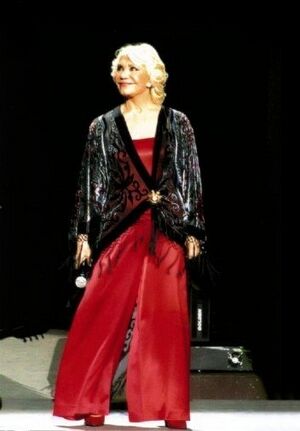Laïko facts for kids
Quick facts for kids Laïko |
|
|---|---|
| Stylistic origins |
|
| Cultural origins | Greece |
| Derivative forms |
|
| Subgenres | |
|
|
Laïko (pronounced "lie-KOH") is a popular type of Greek music. Its name means "song of the people" in Greek. This music style is deeply connected to the traditions of Greek people.
Laïko is often called "folk song" or "urban folk music." It has changed a lot over the years. This music became popular after Rebetiko music became well-known. Laïko is heavily influenced by traditional Greek folk music. Sometimes, the word "Laïko" is used to describe all Greek popular music. But usually, it refers to the music style from the 1950s to the 1980s.
Contents
Early Greek Music: Rebetiko and Elafró Tragoudi
Before the 1930s, two main types of music were popular in Greece. One was traditional Greek folk music, called dimotiká. The other was elafró tragoudi, which means "light song."
Elafró tragoudi was like the popular music you would hear around the world at that time. It was sung by groups or solo artists, like Attik and Nikos Gounaris.
In the 1930s, something new happened. The first recordings of rebetiko music came out and changed everything. A famous Rebetiko musician, Markos Vamvakaris, said they were the first to record "popular" songs. This new music, which was an early form of Laïko, quickly became the most popular music in Greece.
Classic Laïko: The Golden Age
Classic Laïko was the main popular music in Greece during the 1960s and 1970s. This style of Laïko grew from ancient and medieval Greek music traditions.
Many talented singers and composers made Classic Laïko famous. Singers like Nikos Xanthopoulos and composers like Mimis Plessas were very important. Songwriters such as George Zambetas also contributed. Famous artists from the Rebetiko era, like Vassilis Tsitsanis and Manolis Chiotis, continued to create music during this time.
Some artists, like composers Stavros Xarchakos and Mimis Plessas, successfully mixed Laïko with another style called éntekhno. Legendary singers connected to Laïko include Dimitris Mitropanos, Stratos Dionysiou, and Stelios Kazantzidis.
Modern Laïko: Today's Sound
Contemporary Laïko (also called modern Laïko or Laïko-pop) is the most popular music style in Greece today. It's a mix of traditional Greek sounds and modern influences.
Some of the main Greek dances and rhythms you hear in modern Laïko music are Nisiotika, Syrta, Antikristos, Rebetika, Hasapiko, Zeibekiko, Kalamatianos, Kangeli, and Syrtaki.
A lighter, more cheerful version of Laïko, called elafró laïkó, was often used in musicals during the "Golden Age" of Greek movies. The famous singer Tolis Voskopoulos helped shape the modern sound of Greek Laïko.
Contemporary Laïko started to become popular in the early 1980s. A big part of this music culture is the písta, which means "dance floor" or "venue." Nightclubs where DJs play only contemporary Laïko were known as ellinádika in the 1990s and 2000s.
Modern Laïko combines traditional Greek Laïko music with modern Western styles, like pop music and dance music. Well-known songwriters and lyricists of contemporary Laïko after 1990 include Alekos Chrysovergis, Nikos Karvelas, Phoebus, Nikos Terzis, Spyros Giatras, and Giorgos Theofanous.
Understanding the Names
There isn't one single name for contemporary Laïko in Greek. It's often called sýnchrono laïkó, which means "contemporary popular." However, this term can also mean new songs written in the traditional Laïko style.
To avoid confusion, people sometimes use different terms:
- Sýnchrono laïkó or laïko-pop (meaning "folk-pop" or "westernized") for the modern style.
- Gnísio (meaning "proper" or "genuine") or katharóaimo (meaning "pureblood") laïkó for the traditional style.
The choice of words often depends on how people feel about the music. In the late 2000s, Laïko started to include more Western sounds. The term modern laïká comes from the Greek phrase for "modern songs of the people."



